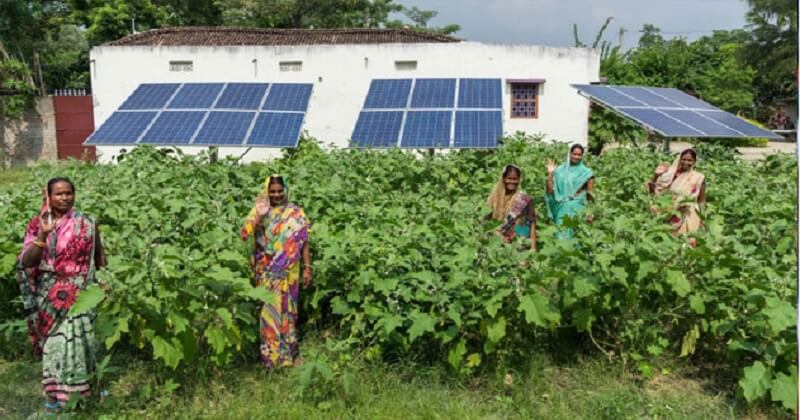
Sitting in the comfort of our homes or offices, we cannot even imagine a single day without electricity. But for the Dharnai village, a small village near Bodhgaya in Bihar which had remained in darkness for 30 years, having electricity was like a far-fetched dream.
“The village happens to be on a NH, it has a railway halt. It has pretty much all the social infrastructure that should be available in a village. And, the only thing that sort of was missing was energy,” says Manish Ram, senior campaigner/analyst, Renewable Energy, Greenpeace India.
As alternative energy sources, the rural population of this area uses hazardous fuels like cow dung, kerosene lamps and firewood for cooking and lighting. According to WHO, over four million people die prematurely from sickness due to household air pollution caused by cooking with these dangerous fuels.
“While India was growing leaps and bounds, we were stuck here for the last 30 years, trying everything in the book to get electricity. We were forced to struggle with kerosene lamps and expensive diesel generators,” said Kamal Kishore, a resident of Dharnai.
Greenpeace, along with partner organisations CEED (Centre for Environment and Energy Development) and BASIX (a livelihood promotional institute), decided to transform the lives of people in this village by bringing in electricity through Decentralized Renewable Energy System (DRES).
The project was put into operation on 20 July 2014, with an initial cost of around Rs. 3 crore. It made Dharnai the first village in India to be fully powered by solar energy. The system has a capacity of 100 kilowatt and powers 450 homes of the 2,400 residents, 50 commercial operations, 60 street lights in the village, two schools, a training centre and a health care facility. A battery backup ensures electricity is available around the clock.
According to Greenpeace, Dharnai was chosen for the project because it suited the requirements of having agriculture as the main occupation and also had basic social infrastructure like a school, healthcare facility, an aanganwadi (community childcare centre), a commercial zone and around 400 households.
The coming of solar-powered electricity has revolutionized the lives of the people here, especially women and children. It allows children to study even beyond the daylight hours and lifts the restriction on women to cook before it is dark. Moreover, women in Dharnai can now venture out after it is dark due to the street lights.
The solar powered pumps have provided access to fresh water to the farmers. People are now able to charge their mobile phones regularly, and the world of Internet is now also open to the people of Dharnai.
“Solar energy is the only solution and I praise and appreciate Greenpeace for accepting the challenge in successfully installing this everlasting viable solution model,” Nitish Kumar told at the public event in Dharnai.
Climate change is a reality now, and the current central government has rightly acknowledged that with its target of 100 GW of solar capacity by 2022. However, Greenpeace says that Decentralized energy systems are more helpful for villages like Dharnai than the central grid that is currently in use.

Post Your Comments